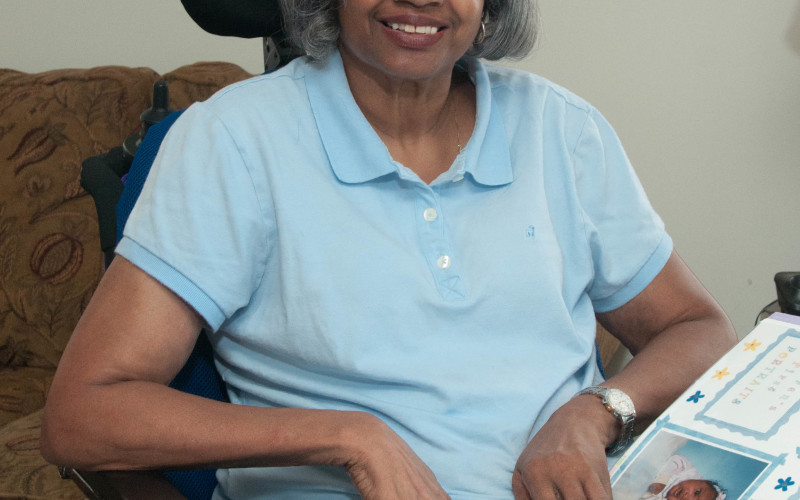Exceptional care healed her difficult wounds

For years, Catherine Murray has used a motorized wheelchair to get her where she needs to go. She has multiple sclerosis, and the chair has provided her with mobility that allows her to take public transportation and visit her doctors.
But after years in the chair, Murray, 66, developed a pressure sore on her sacrum, an injury to the skin and underlying tissue at the base of her spine.
“It was an exceptionally difficult wound that went through to the bone at its worst point,” she recalls. “I wondered if I was ever going to get well.”
Christiana Care’s Wound Care and Hyperbaric Medicine Center offers expert outpatient care to heal the most complex cases, the wounds that resist conventional therapy. Options include such treatments as skin substitutes, advanced wraps and bandages, hyperbaric oxygen therapy and debridement, in which damaged tissue is cut away to promote healing. The vast majority of wounds — between 88 and 93 percent — heal within 12 weeks.
“We focus on wounds that can’t be treated in most doctors’ offices because they don’t have the equipment or training to deal with these difficult cases,” said Nicholas Biasotto, D.O., the center’s medical director.
An important part of the strategy is seeing patients every week.
“If a wound isn’t healing the way we want it to, we know right away, not a month later,” Dr. Biasotto says. “Studies also have shown that weekly debridement results in better outcomes.”
Her treatment included flap surgery, in which healthy skin and muscle is harvested from other areas of the body to cover a wound.
A year after the wound on her sacrum was successfully treated Murray, developed a second wound, an ulcer on her left leg caused by a blockage in an artery. That wound took more than six months to heal because it involved her Achilles tendon, the sinew that attaches the calf muscle to the back of the heel bone. On one visit, she wept in frustration over her slow progress.
“As I sat there crying, my doctor told me he wanted to help dry my tears,” she said.
Murray’s doctor showed her pictures of the wound taken during each office visit so she could clearly see her steady improvement.
“Just seeing the original pictures of the wound and comparing them to how much better I was that day was an eye-opener for me,” she said. “And it was wonderful having doctors and nurses who were very kind and willing to answer every question I had.”
Murray received regular debridement treatments as she and the wound team continued to work as her partners in her care. After a few more weeks, her ulcer healed completely and she received a skin graft with skin removed from her own thigh.
Preventing future wounds is an important part of care. As part of her treatment, Murray’s wheelchair was outfitted with a cushion custom designed to fit her through pressure mapping, a computerized clinical tool for assessing the way pressure is distributed when she sits. Her bed was modified with an overlay that vibrates gently while she sleeps.
“The people at the wound center were my family, always there to take care of me,” she said. “Thanks to their good care, my wounds are healed.”